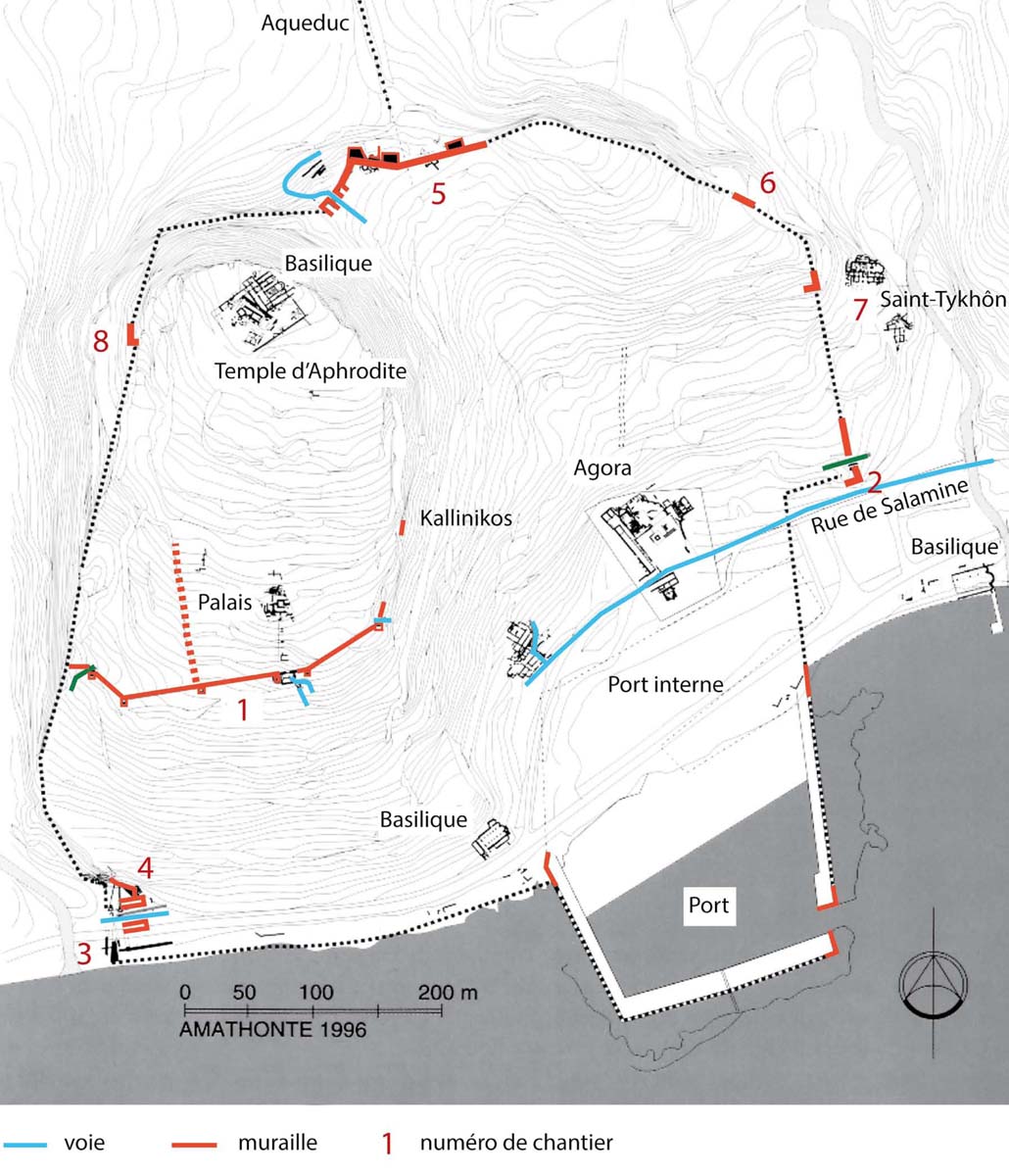We have always known that Amathus had fortification walls made visible by the facing of a wall that resisted lootings and still stands 6,20 meters thick and 9 meters high, to the west of the city by the seaside, along with the wall traversing the acropolis.
![L. Mayer, 1780 : the southwestern wall (P. Aupert / Archives EFA, AMATH 3-A [3])](http://www.efa.gr/storage/2015/09/amathonte_AMATH_3-A_3.jpg)
L. Mayer, 1780 : the southwestern wall (P. Aupert / Archives EFA, AMATH 3-A [3])
These two factors were known before the arrival of the 1975 mission. Shortly afterwards, an Archaic wall was added on the western slope of the acropolis (the West Terrace), then the cornerstone of a large wall at the limits of the lower city (East gate). Next the expedition proceeded with a series of localized digs, excavations that would extend over 23 years (concentrated mainly on the archaeological sites of the middle fortification wall of the acropolis, the West gate and the North wall) with the aim of addressing the various questions concerning chronology and the corresponding relation of the fortification structures that were discovered.

Map of the fortifications with the sections studied (P. Aupert, T. Koželj, M. Wurch-Koželj, J. Durin)
The wall circled the city – the acropolis and the lower town – since the Archaic period and it was possible to date the different phases. Its evolution reveals that the history of the city was marked by several events:
- the erecting of the fortifications took place between the second half of the 8th and the 7th centuries BC while the city is endowed with a royal palace at the end of the 9th or beginning of the 8th century BC;
- in 498 BC within the context of the Ionian revolt in Cyprus, the capture of the city is observed along with the destruction of the palace that no historian had ever mentioned;
- after 306 BC the Antigonid project of building a port and replacing the ancient fortifications of the city is probably forfeited as soon as Ptolemy took back power of the island in 294 BC;;
- during the pax romana, despite some repairs and reinforcements, the wall as a defense structure is in reality abandoned;
- in the first half of the 7th century AD a new defense wall, limited to the upper part of the acropolis, is erected after disturbances in the Orient;; this fortification is partially reinforced at the time of the Arab incursions, before the destruction of the city by the latter and its subsequent abandonment.
P. Aupert
